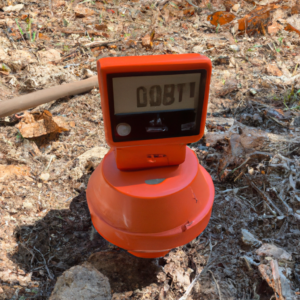In the world of construction and infrastructure development, what lies beneath the surface is often just as crucial as what stands above it. Enter underground utility locators – unsung heroes who ensure that construction projects proceed smoothly, safely, and without costly disruptions. In this comprehensive guide, we’ll delve into the world of underground utility locators mapping, exploring their pivotal role, the technologies they employ, and the benefits they bring to the table.

The Role of Underground Utility Locators
When ground is broken for a new building or infrastructure project, the first challenge is often not what meets the eye. Beneath the surface, an intricate network of utility lines – water, gas, electricity, telecommunications – crisscrosses, forming the lifelines of any urban ecosystem. This is where underground utility locators step in. These experts use cutting-edge technologies to accurately map and mark the locations of these utilities, ensuring that construction crews know what lies below before they start digging.
Underground utility locators employ a range of tools, from electromagnetic detectors to ground-penetrating radar (GPR), to scan the ground and identify the presence and depth of utilities. This information helps construction teams plan their excavation work carefully, avoiding accidental damage to these vital systems.
Key Benefits of Accurate Mapping
The importance of precise underground utility locator mapping cannot be overstated. Accidents caused by unintentional utility damage during construction can lead to significant financial losses, project delays, and even endanger lives. Accurate mapping mitigates these risks. By knowing the exact locations of utilities, construction crews can work confidently, significantly reducing the chances of costly mishaps.
Moreover, accurate utility mapping enhances worker safety. When crews are aware of underground utility locations, they can take precautions to prevent accidental hits and potential hazardous situations. Additionally, communities benefit from reduced service disruptions. When utility lines are accurately mapped, maintenance and repair work can be executed with minimal disruption to services.
Challenges in Underground Utility Locating
While the benefits are clear, the process of underground utility locating is not without its challenges. The sheer diversity of utility types – from ancient water pipes to modern fiber-optic cables – presents complexity. Moreover, outdated or incomplete records can lead to inaccurate mapping. Urban environments compound the issue, as crowded spaces can make access difficult and complicate mapping efforts.
Technological Innovations in Utility Mapping
To tackle these challenges, technology comes to the rescue. Ground-penetrating radar (GPR), a non-intrusive method, has emerged as a powerful tool in utility mapping. It uses radar pulses to image the subsurface, helping locate utilities without disturbing the ground. Electromagnetic induction methods, on the other hand, can detect conductive materials like pipes and cables.
The integration of Geographic Information Systems (GIS) is another game-changer. GIS software enables the creation of detailed digital maps that overlay utility data with geographical context. This integration allows for better decision-making and comprehensive planning.
Best Practices for Effective Underground Utility Mapping
Successful utility mapping requires collaboration. Utility companies, local authorities, and construction teams must work together to share information and insights. Before construction begins, thorough site surveys should be conducted to identify existing utilities accurately. Furthermore, utility maps should be regularly updated to reflect any changes or additions.
Regulations and Safety Standards
The importance of underground utility locating is reflected in regulations and safety standards. Negligence in mapping and damaging utilities can result in legal consequences and financial penalties. Several case studies underscore the costly outcomes of ignoring safety protocols, emphasizing the necessity of responsible construction practices.
Future Trends in Utility Locating
As technology evolves, so does utility locating. Artificial Intelligence (AI) is poised to revolutionize the field with predictive mapping. AI algorithms can analyze data trends and predict potential utility locations, aiding in proactive planning. Improved data sharing platforms between stakeholders will also streamline the process, ensuring smoother construction workflows. Non-intrusive techniques are set to advance, minimizing disruption to both the ground and services.
Choosing the Right Underground Utility Locator
Selecting the right utility locating service is critical. When seeking a provider, factors like certifications, experience, and client reviews should guide your decision. Professionalism, a solid track record, and a commitment to safety are essential traits to look for.
Conclusion
Underground utility locators are the unsung heroes of construction, ensuring that the hidden infrastructure of our cities remains unharmed during development. Accurate mapping through advanced technologies safeguards construction projects, worker safety, and community services. With the constant evolution of mapping techniques, the future promises even more efficient and proactive approaches to underground utility locating.




